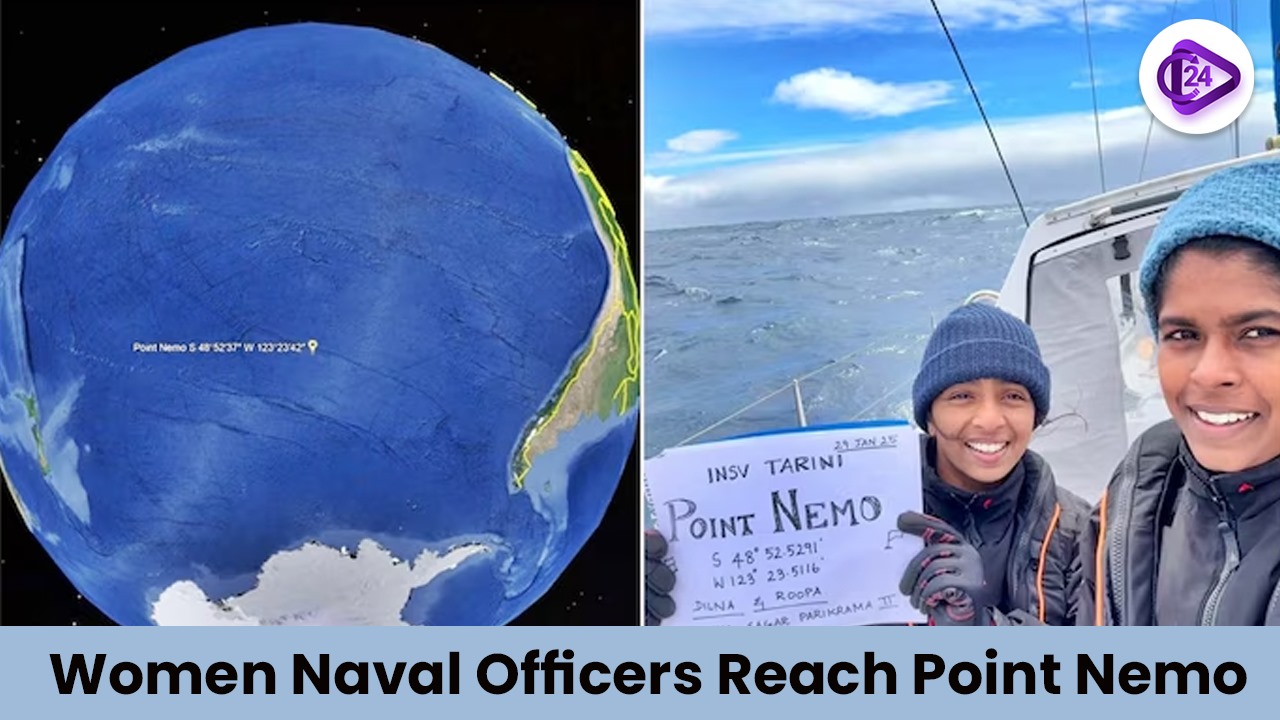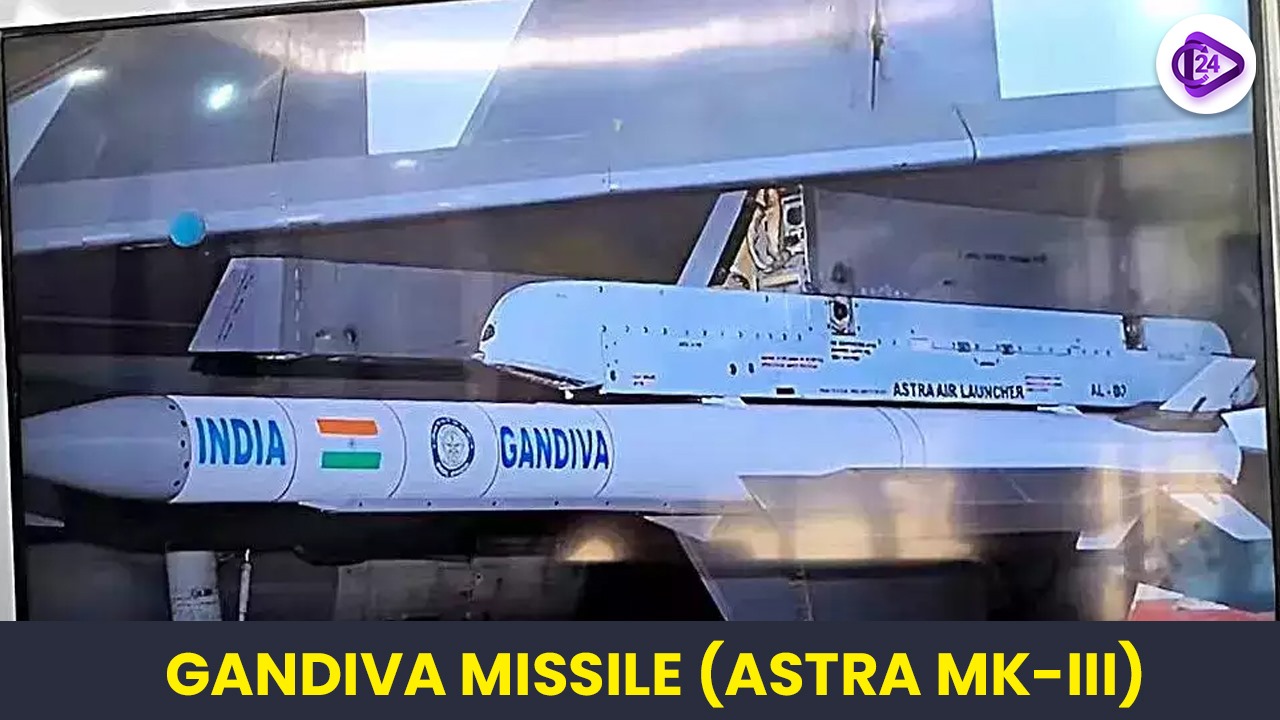
The Navika Sagar Parikrama II circumnavigation expedition aboard INSV Tarini achieved its significant milestone when two women officers of the Indian Navy arrived at the remote Point Nemo. The maritime expedition started at Goa on October 2, 2024, before the ship completed its journey at Lyttelton Port, New Zealand by December 22, 2024. The crew embarked on their most extended sea voyage as they sailed to Port Stanley in the Falkland Islands which required them to travel 5600 nautical miles.
What is Point Nemo?
-
Point Nemo in the South Pacific Ocean functions as the most inaccessible section of Earth because it serves as the Oceanic Pole of Inaccessibility. The satellite graveyard exists in this region because space agencies on purpose send spacecraft here during their retirement phase to avoid creating space wreckage. Since 1993 more than 260 space debris items including NASA’s Skylab and Russia’s Mir space station have been directed to crash at this specific spot.
-
NASA together with aerospace agencies established in 1993 the two options to dispose of defunct spacecraft through placing them in "graveyard orbit" or sending them to "water grave" to minimize space debris.
-
Operational spacecraft face considerable dangers from space debris which consists mainly of failed satellites. The disposal program has been established to decrease potential threats.
-
The space agencies at Point Nemo intentionally lead defunct satellites to sink into the water instead of remaining in orbit since this preserves oceanic space rather than adding to orbital space debris.
-
The remote location of Point Nemo represents the "oceanic pole of inaccessibility" which makes it a suitable selection area for satellite disposal since it exists far from human influence and marine habitats.
Named after Captain Nemo
The marine environment surrounding this area lacks essential nutrients which it poses an unfavorable living environment for aquatic organisms. Named after Captain Nemo from Jules Verne's Twenty Thousand Leagues Under the Sea, "Nemo" translates to "no one" in Latin, highlighting its isolation.
Conclusion
The INSV Tarini crew's Point Nemo navigation showcased India's strengthening position in worldwide maritime discovery, particularly through their successful accomplishment of the female naval officers. Global organizations now focus on satellite graveyard management at Point Nemo because of its strategic role in space debris regulation. Through this expedition, India demonstrates its dedication to enhancing its naval capabilities alongside scientific exploration and research programs.



 India as the Second-Largest Arms Importer: A Strategic Perspective
India as the Second-Largest Arms Importer: A Strategic Perspective Gandiva Missile (Astra Mk-III): India's Advanced BVR Air-to-Air Weapon
Gandiva Missile (Astra Mk-III): India's Advanced BVR Air-to-Air Weapon Exercise Desert Hunt 2025: India’s Special Forces Joint Drill
Exercise Desert Hunt 2025: India’s Special Forces Joint Drill India Targets ₹50,000 Crore Defence Exports by 2029
India Targets ₹50,000 Crore Defence Exports by 2029 India-Japan Military Cooperation Strengthens with Exercise DHARMA GUARDIAN 2025
India-Japan Military Cooperation Strengthens with Exercise DHARMA GUARDIAN 2025 Exercise Cyclone 2025 Begins: India and Egypt Strengthen Defense Ties
Exercise Cyclone 2025 Begins: India and Egypt Strengthen Defense Ties Aero India 2025: Advancing Indian Naval Aviation & Aatmanirbharta
Aero India 2025: Advancing Indian Naval Aviation & Aatmanirbharta 13th Edition of Ekuverin Military Exercise between India and Maldives
13th Edition of Ekuverin Military Exercise between India and Maldives Atmanirbhar Bharat in Defence: India Leap Toward Self-Reliance
Atmanirbhar Bharat in Defence: India Leap Toward Self-Reliance






